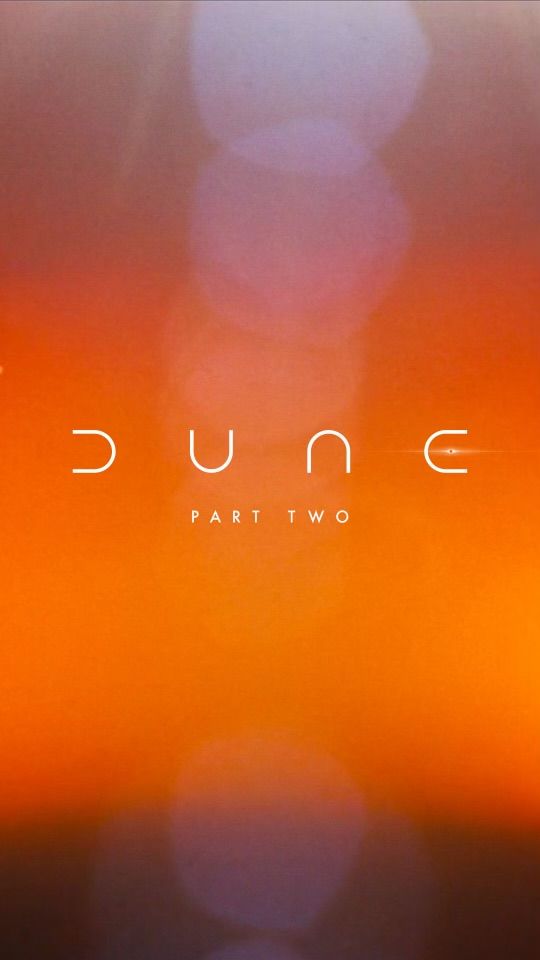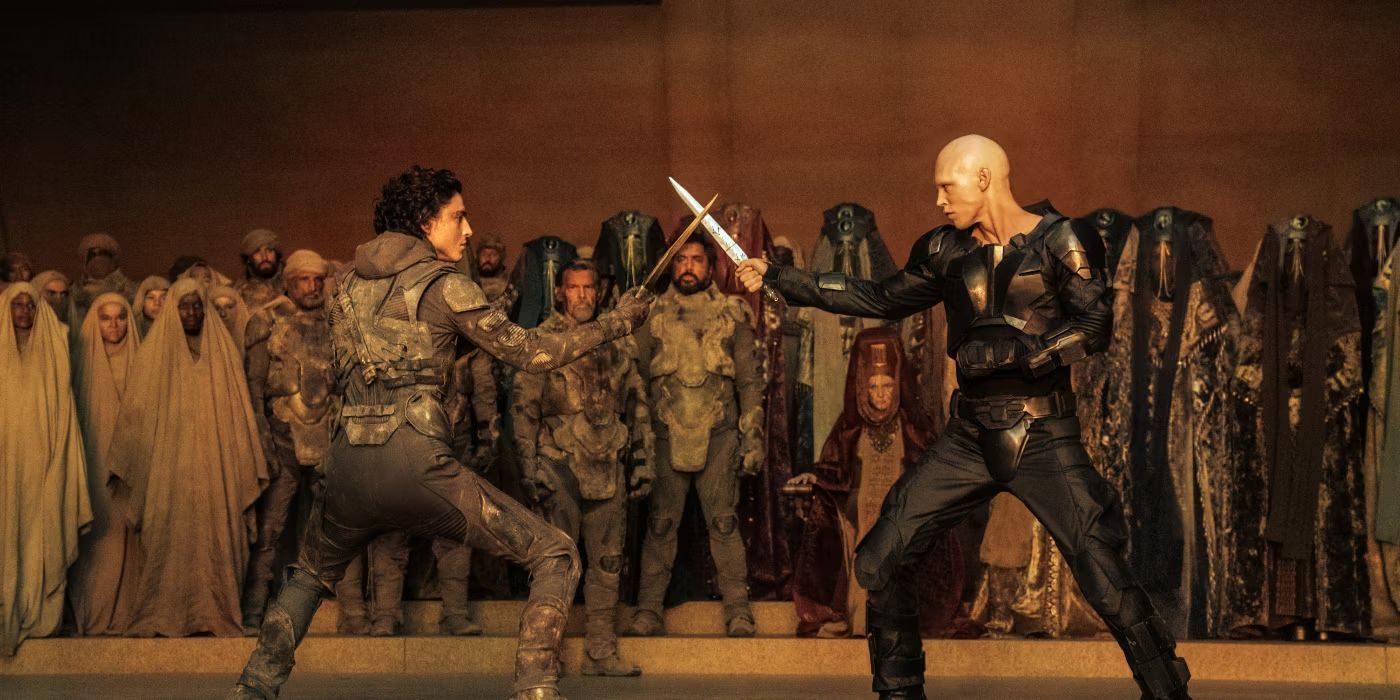The Big Picture
- Joe Walker is proud of the sandworm sequence & highlights the importance of balance in editing.
- Memes related to Dune: Part Two have been well-received and show the film's cultural impact.
- Maintaining the momentum and rhythm of the nearly three-hour film was a key goal for Walker as an editor.
Dune: Part Two marks a landmark achievement in the sci-fi genre and what large-scale epics can be. Directed by Denis Villeneuve, Dune: Part Two follows Paul Atreides (Timothée Chalamet) and his ascension to power as he seeks revenge against Baron Harkonnen (Stellan Skarsgård) for the destruction of House Atreides. The film features an all-star cast that includes Javier Bardem, Josh Brolin, and Rebecca Ferguson.
Bringing the world of Arrakis to life is no small feat. Thankfully, the editor of both Dune and its sequel, Joe Walker, was more than up to the task. After winning his first Oscar for editing Dune: Part One, Walker reteamed with Villeneuve to assemble the story of Paul’s infiltration of the Fremen. Walker previously worked with Villeneuve as the editor on Sicario, Arrival, and Blade Runner 2049.
During this interview with Collider, Joe Walker explains why he’s most proud of how the sandworm sequence came out, as well as the scenes between Paul and Stilgar (Bardem). Plus, he reveals how much he enjoys the memes that have come from the movie. Walker also explains how the film was able to keep moving forward despite its nearly three-hour runtime.
You can watch the full interview in the video above, or you can read the transcript below.

Dune: Part Two
Paul Atreides unites with Chani and the Fremen while seeking revenge against the conspirators who destroyed his family.
Joe Walker Loves Seeing ‘Dune: Part Two’ Memes
COLLIDER: So Joe, how has it been for you seeing all the praise for Dune: Part Two?
WALKER: It's wild, isn't it? It's wild. Not in your wildest dreams would you be getting this kind of response. I love the fact that it was a little bit like that on Arrival when there were a lot of memes with Amy Adams standing there with the whiteboard where people were, you know, putting "covfefe" or something on it. It was like when you see it seep into the culture. I've seen a lot of references to it recently. I kind of always feel like that's particularly joyous that you feel like you're part of the cultural exchange. I love that.
Speaking of which, with Challengers that just came out, there have been cuts of Dune with the Challengers score on top of it. Have you seen that?
WALKER: I haven't. I've got to look at that now. You'll have to send me a link.
Oh my gosh, I will have to send you a link because it is excellent.
WALKER: I love it. I love people playing and engaging with it, but what's extraordinary is, I've met people who've seen it over 20 times. Can you believe that? And it's like, that's impressive. Deeply impressive. People just seem to want to keep going back and delving. They don't want that world to stop, which is really mission accomplished. I mean, for an editor, that's what you're aiming for is to go through a substantial story with an audience but kind of leave them wanting some more. So it feels like we got that right. But getting there, that's what it's all about for me. But it's so gratifying. I can't tell you.
Joe Walker Explains How He Kept the Momentum Going For ‘Dune: Part Two’s Runtime
Well, truly, what you do is so important because it's through the edit that we get the visuals, the script, the world of Dune to come alive. You just mentioned that you've heard some people have seen it over 20 times. This movie is two hours and 46 minutes, but it really does go by so quickly. For you, when you were editing this, how did you maintain that type of momentum as you brought this together?
WALKER: Sometimes they're different ways. The edit is the last kind of script pass, if you like. You start with a script, and then it becomes storyboards and concept art, and then it becomes flesh and blood. Actually there's a step where he'll go back, Denis [Villeneuve] will go back to the script and adapt it to fit. The storyboards are a real conceptual workout of the whole film and the concept art. They develop how the world works. How do the arms of the harvester move so that you can then place Paul and Chani [Zendaya] in danger in the shadows of that arm or the leg? So all of that's been going on, then you're flesh and blood, and you've got these amazing kinds of performances to play with.
I come from a music background, so it's always like the big plus is working with performance, and these amazing performances and adjudicating those little moments. For example, Stilgar [Bardem] and Paul talking about centipedes. It's kind of like, you can see that Paul is very preoccupied; but also Paul just gives me these fantastic reactions to play with that makes Stilgar extremely funny at times, which is something you really need after you've just seen a woman nearly kill herself from taking a poison. It's sort of like a relief, but it's also deeply rooted in character. So you're playing with all these elements in the edit. I think the truth is, you know, me and Denis have worked together numerous times now, and it's always trying to kind of search for that ultimate cut, the one where things click into place. I'm not necessarily going to say that everything is perfect in that, but it feels like if we change it much more, it's not going to have something that it's got, which is that momentum and the sense of the thread, the rope is pulled strong. Sometimes that's to do with rebalancing scenes.
For example, I think in Dune: Part Two, one of the bigger changes was to do with in the middle of the film, feeling like you allow Paul to climb all the way up to leader. From outsider to insider. Then you go to Feyd [Austin Butler], and you see the rise of Feyd. It felt like the sort of balancing of that was right, the way that we ended up doing it, and that evolved that way. In Dune: Part One, sometimes it's shaping scenes to intercut them more rather than stringing them together more and feeling a longer big wave. In the case of Paul's, you can achieve that in different ways. With Paul discovering the ring in the tent is a really good example where they were sequential scenes, and we ended up kind of melting them so that Paul discovers the death at the same time as we do. So it's kind of a simultaneity of emotional resonance. God, hey, Cahiers du Cinema would be proud of me for that sentence. But you know what I mean? That's in the wheelhouse of the editor to try and kind of find the optimum passage through those bigger story beats.
Sometimes it's about just being selective and giving the best position for something and finding a rhythm for things. But Part Two was very much leaning into the action-adventure. A lot of it was just really enjoying playing with the huge game that was in front of me.
Joe Walker’s Favorite Scenes From ‘Dune: Part Two’ Include the Sandworm Ride and Paul’s Fight With Feyd-Rautha
Even looking back on your time editing this in post, is there a character you wish that you had more reaction shots of that you want to cut away during a scene? You mentioned Stilgar bringing some levity in the midst of some really dark, dramatic stuff that was going on.
WALKER: They're all fantastic actors. Let's just cut to the quick. You could get a really big impact from cutting to Lady Jessica [Ferguson], for example, for little moments where she's sort of fighting with Chani. The fight with Feyd and Paul, which is principally a sort of duel to the death and an extremely kind of visceral fight, was very carefully shot over, I think, four or five days. But actually, just putting in those little reactions. There's an incredible one of Jessica standing when she thinks that Paul's gonna die. You see the whole world of hope collapse on Stilgar's face and Josh [Brolin], Gurney's character, also, his teeth have never been more gritted. Those, they're very short, but it's always about character. It's always about character. It's always driven by that. It's a kind of joy. I didn't feel the need for any more than they gave me, which is just exquisite.
Of the final product, what were your favorite scenes or sequences that you were able to piece together and edit?
WALKER: Look, everybody's gonna say the worm ride was probably the most complicated shoot. It was a 44-day shoot and immensely difficult for them to capture and get as much of it done practically. I loved cutting the Paul-Feyd fight at the end. I love those little moments where, for example, you cut — you don't want the thing to be an overwhelming noise. You want little shapes and breaths to break things up. For example, the moment where the ornithopter falls from the sky behind Chani, it's just a little moment where you cut back; you don't hear anything. You just hear Chani go [heavy breathing] and then bang! And then Hans [Zimmer] comes in, massive.
I don't know, I enjoyed all of those, but I love the fact that it embraces these big set pieces, but they also have these tiny little intimate scenes. I really loved the Stilgar and Paul scenes, in particular, to cut. I'm really, really happy with the way that that cut together — Paul's amazing reactions. And Paul and Chani were always kind of a bit of a dream. There was such great chemistry there. So I don't know. I can't narrow it down to one thing. There were just many. It was just full of gifts, honestly.
You sound like a very proud parent of all of the shots that you got. Joe, thank you so much for chatting with me, and again, congratulations.
WALKER: Thanks, Meredith. Thanks for the lovely questions.
Dune: Part Two is available to purchase on digital now and on 4K UHD on May 14.


